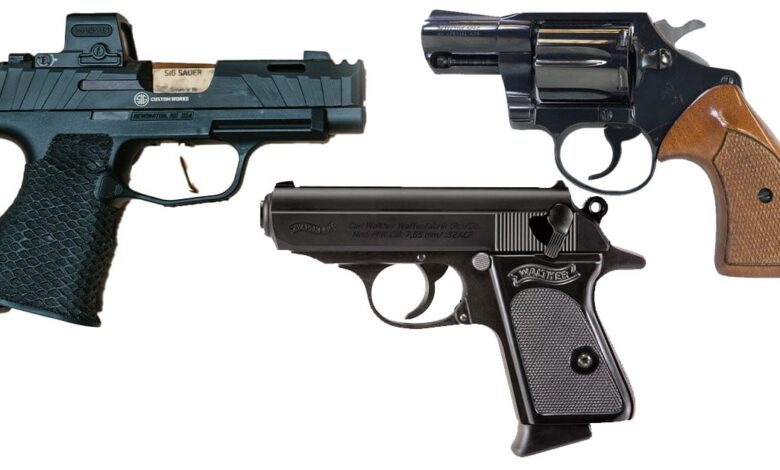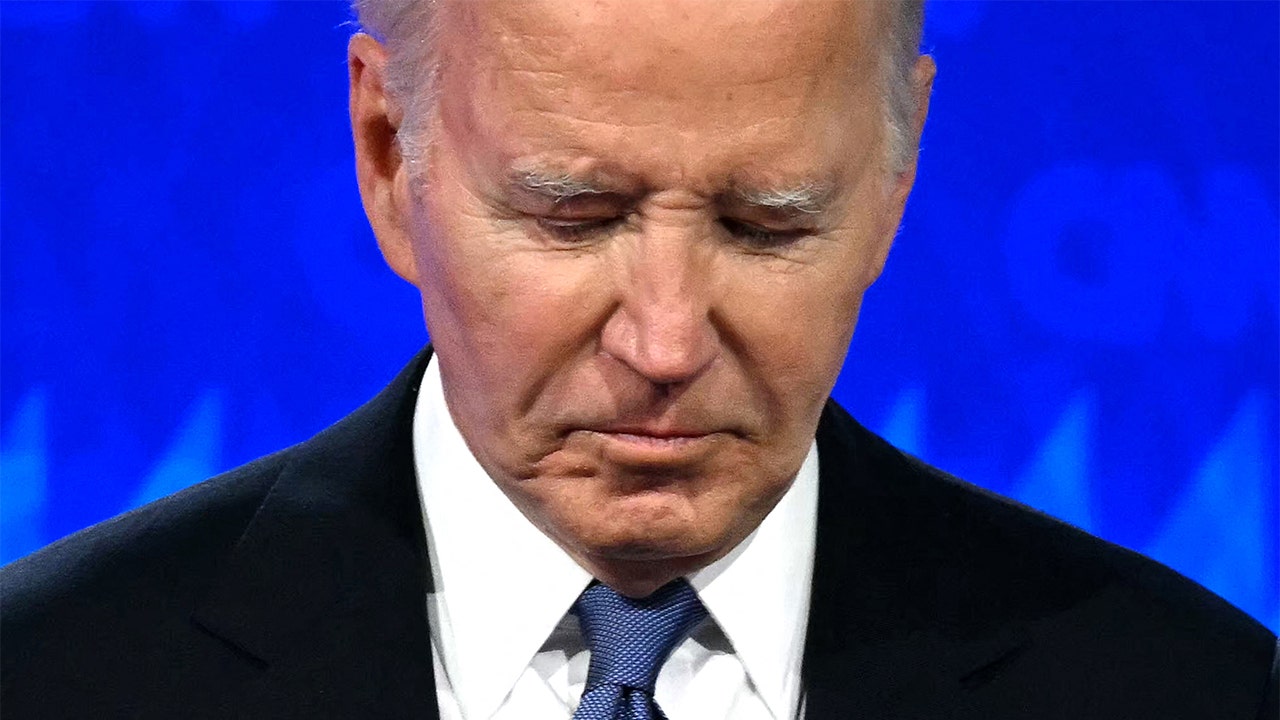The Evolution of Concealed Carry Handguns

There were 21.8 million Americans with concealed carry permits in 2022, a record-high number. That number has dropped slightly, primarily because 27 states no longer require a permit to carry a concealed weapon. The number of people embracing concealed carry to protect themselves and their families has generated a massive market for suitable guns, resulting in an amazing selection for the buyer. But it was not always that way, and for many years, the selection of guns for concealed carry was limited.
In The Beginning
Carrying a concealed handgun was illegal in the United States for most of the country’s history. States began passing laws banning the carrying of concealed weapons in the early 1800s. By the mid-twentieth century, carrying a concealed handgun was illegal in most states. Since the only people who carried them were police detectives and criminals, there was not a big market for easily concealed handguns. That changed in 1987 when Florida adopted “shall issue” for concealed carry permits. Although Florida was not the first state to adopt “shall issue,” Florida’s law started the ball rolling and became the model other states followed.
The selection of guns suitable for concealed carry was limited when Florida passed its law. Revolvers were the most common and largely the most reliable handguns being carried. These were usually short-barreled revolvers called “snubbies,” short for a snub-nosed revolver, usually a Colt Detective Special or Smith & Wesson J-Frame with a 2” barrel and chambered in .38 Special.
There were also a few quality semiautomatic pistols available for concealed carry. The most famous of these was the Walther PPK/S. The PPK/S is a modification of the famous PPK created to comply with the Gun Control Act of 1968. At the time, it was usually chambered in .32 ACP, a cartridge that left much to be desired for concealed carry, although now it is also available in .380 ACP. Most other small pistols of the time were made by companies like Jennings, Lorcin, and Raven and were of questionable quality and reliability. They were chambered in .32, .25 ACP (which is even more anemic than .32), or .22LR and had capacities of only 6 or 7+1. That left short-barreled revolvers as the preferred handguns for concealed carry unless you were willing to carry a full-size gun like a 1911, which, while powerful and easy to shoot, was also heavy and large, making it difficult to conceal.
The Plastic Revolution
Everything in the concealed carry world changed with the advent of polymer frames for handguns. After the success of the full-size Glock 17, Glock introduced the 9mm G19 compact in 1988. Glocks initially faced an uphill climb trying to break into the American market, frequently being referred to as “Tupperware guns” by fans of the 1911, Smith & Wesson, and Ruger all-steel semiautomatic handguns. But, eventually, their lighter weight, high capacity, accuracy, and unrivaled reliability pushed them to the top of the heap in the battle for market share. These days, other than a few companies that specialize in 1911s, virtually every company manufacturing guns for concealed carry offers guns with polymer lowers, many of which are Glock clones.
Another gun that started a revolution in small, easily concealed firearms is the KelTec P32. KelTec, always an innovator in firearm design, introduced the P32 in 1999 as a pocket-carry gun. Although only a .32 ACP chambering, it was unlike the previous generation of tiny guns because it was light (it has a polymer frame) and very reliable, offering concealed carriers a gun they could easily carry in their pocket wherever they went. The P32 is still in production, and KelTec built on its success with similar guns chambered for .380 ACP and 9mm. More significantly, the P32 inspired other manufacturers who created guns like the Ruger LCP, introduced in 2008, and SCCY’s line of small pistols.
There have been a lot of milestones since then, but unquestionably, one of the most significant is the Sig P365. Introduced in 2017, it is a .380 or 9mm striker-fired subcompact pistol with a capacity ranging from 10 to 17+1 rounds following a polymer frame and metal upper pattern. As with other pioneer handguns, it bred many competitors as other manufacturers saw the demand for a small, reliable handgun with a large ammo capacity.
Caliber Wars
One major aspect of the concealed carry phenomenon is an ongoing debate about the best caliber, particularly .45 ACP vs 9mm. I recall the heated online arguments of the early 2000s between the .45 ACP faithful and those willing to give 9mm a fair chance. The term “stopping power” was thrown around amid claims that only a .45 would stop a threat in its tracks and that 9mm was too weak to bet your life on. That’s a stretch, but there was a time when .45 ACP delivered more horsepower than a 9mm, if for no other reason than the size of the hole it made, but modern bullet designs and propellent formulas have made the 9mm a very effective cartridge. So much so that analysis of police shootings revealed that there was very little difference between the real-world performance of 9mm, .40 S&W, .45 ACP, and 10mm, suggesting that a choice between any of those comes down to capacity, the size of gun you’re willing to carry, and how much recoil you can manage.
Regarding smaller calibers once popular for concealed carry guns, everyone agrees that .25 ACP and .22LR, which have similar ballistic performance when fired from a pistol with a 3” or shorter barrel, are too small and weak to be effective self-defense rounds. Likewise, .32 ACP is not considered a particularly effective self-defense cartridge, 007, and his PPK notwithstanding. That leaves .380 ACP as the only viable choice if you are recoil-sensitive and want something smaller than 9mm, and it is considered the smallest cartridge appropriate for self-defense. A few other cartridges, like the .45 GAP and .40 S&W, have been created to meet some specific needs voiced by law enforcement, but neither are currently very popular. Likewise, the .30 Super Carry was released by Federal in 2022 and billed as an innovative game-changer for concealed carry, but it has not caught on. The 9mm is the king in the concealed carry world, and the .45 ACP is still very much alive. Both are over 100 years old and were developed for military use, which speaks well for their ability to withstand the tests of time. It also means they are both plentiful and relatively inexpensive, especially for range ammo.
The Manual Safety Controversy
When semiautomatic handguns began to gain popularity just after the turn of the 20th century, they were practically all single-action. They intended to be carried with a bullet in the chamber and the hammer cocked back. Because a single-action gun has a very light trigger, it was common sense that there should be manual safety, and some models had more than one, such as the 1911, which has a thumb safety and a grip safety. The commonly accepted way to carry a semiautomatic pistol was with a round in the chamber, the hammer cocked, and the safety on. For the next several decades, manufacturers followed that formula even for double-action pistols that could be decocked and carried with a round in the chamber and the hammer down because they have a stiff first-shot trigger pull. The idea of a handgun without a manual safety was practically unheard of and was actually scary to lots of folks.
Then Glock entered the scene. Glock was not the first semiautomatic pistol that did not have a manual safety, but it was the first one that became a mainstream concealed carry phenomenon. To be accurate, Glock’s trigger safety is designed such that unless your finger is squarely on the trigger and depressing the trigger safety lever, the gun will not fire. However, getting something like a shirttail caught in the trigger housing could cause the gun to fire, which gave many people pause. As more people started carrying Glocks and got used to the idea of no manual safety, the idea that it was foolish began to diminish. Today, although Glocks sold in the U.S. still do not have a manual safety, many other manufacturers offer their guns, such as the very popular Sig P365, with or without a manual safety to suit the individual. However, it would be unwise to carry a single-action pistol like a 1911 with a round in the chamber and the hammer back unless it had a manual safety.
Revolvers
Although semiautomatic pistols supplanted revolvers as the most common handgun for concealed carry, revolvers never disappeared. In fact, they are currently making a comeback. Many people feel a revolver is much safer to carry than a pistol because, although they do not have manual safeties, the long, stiff double-action trigger pull makes it difficult for one to go off through a negligent discharge. There are many revolvers specifically designed for concealed carry on the market, such as the Ruger LCR, Taurus 856, S&W J-Frame, and the Colt King Cobra Carry. All are modern compact designs with barrels 2” or less in length.
A Rich Assortment
Today, Americans have embraced their right to bear arms under the Second Amendment. What started out as a selection of less than a dozen decent firearms suitable for concealed carry thirty-odd years ago has grown to hundreds if not thousands when you consider all the different model options. You can choose any caliber you want from .32ACP through .357 Magnum and 10mm. There are single-action (SA), double-action-only (DAO), SA/DA, striker-fired, and revolvers. They can be made from any combination of polymer, steel, stainless steel, aluminum, and even titanium. Best of all, competition among firearms manufacturers guarantees that virtually all the new guns hitting the market are reliable and well-made, whether they cost under $500 or more than a mortgage payment. Any manufacturer offering less would quickly be out of business.







